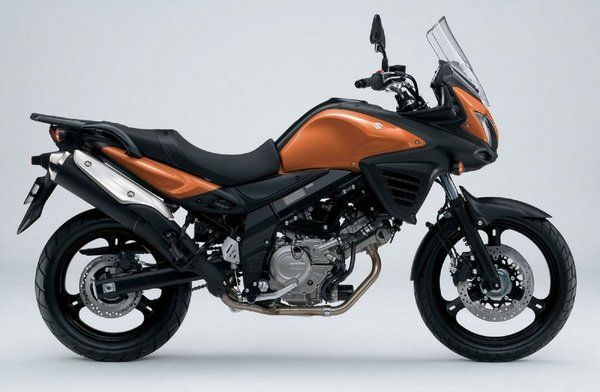Great Uncle to my kids, Whitey is a most exceptional individual and my cherished friend. He is more than 80 years old now and still riding motorcycles.
Whitey "Hacksaw" Hartman:
"I've won over one hundred trophies but I've never been a racer. I never thought I had to beat the other guy. If I see a guy wants to overtake me, I say 'go ahead, live it up.' Either you are better than me or you think you are. If you're better than me you deserve to be out front. If you think you are, I'll pass your wreckage along the way."
Visitor parking at Whitey's house.
No, he is not listening to Snoop Dogg, Pink Floyd, Glen Miller or Vivaldi on his ever-present headphones. His hearing is all but gone so he uses a pocket amplifier and mic to pick up voice transmissions.
The lovely Suzie agrees to be interviewed
Whitey: "Do you trust me to lead this group ride down into the extremely treacherous Grand Ronde River Valley, on the gravel-strewn road they call The Rattlesnake."
Suzie: "Ah. Well. Ah."
This is classic. After successfully leading a bunch of power-mad muscle-bikers down the treacherous switchbacks, guess who gets stopped for speeding on the only safe stretch of road. Your man in blue is there to save us from ourselves should we dip into unsafe velocities above 35-mph. Hooligan Hartman gets a vigorous talkin-to. He could almost hear what the flapping lips were saying after donning the headphones. Give me a break, buddy! And how about that nice family in the mini-van I saw caught in your money-grubbing snare on our way back home.
Hacksaw at speed. Astride his beloved Yamaha 225, he's going so fast I couldn't keep him in the frame. Truthfully, he is more interested in grace on two wheels than speed or power.
"Most of my life I have always ridden the lightest bike I could get by with, rather than the fastest."
"I choose itty-bitty bikes but choose really twisty twisties to enjoy them on."
"Rather than compare myself to others, as one would while racing, I concerned myself only with enjoying riding near the peak of my own talents, just for the fun of it."
As a young man, he once rode a Yamaguchi 55 (forefather of the Hodaka) from Cheyenne, Wyoming to Sacramento, CA.
He claims to have owned over 250 motorcycles and I can't imagine how any of them escaped modification. I have personally seen him completely change the ergonomics and steering geometry of a motorcycle in less time than it would take me to repair a couple of flat tires.
Another time, we were changing wheel sizes on a bike and needed longer spokes to fit the new 21" rim. Whitey walks over to a group of drawers containing spokes of various lengths. He sized them up visually, grabbed a handful and said: "These ought to be about right." They were exactly the right length.
A Yamaguchi 55 is transformed into a tiddler trials bike named Li'l Ballerina
Grand Nephew, Heath, goes for a backyard putt and "cleans the section."
I think of him as a bit of a mechanical genius as well as a tireless improver of his little corner of the world. Nearly everything he comes in contact with that could possibly be considered a machine gets the Whitey Touch — improved for his personal use. Even the keys in his pocket are modified for less bulk. A chair is his machine for sitting. A shoe is his machine for walking — it gets modified. His workshop is full of innovative tools he has reworked or made from scratch.
A wheel truing jig, made from fork tubes, triple trees and a few adapted parts
A shop chair gets Whitey-ized.
Why not apply the same magic to the kitchen chairs
Even the toilet gets appropriate modification.
I wonder if Whitey might have worked as an elf in Santa's workshop?
Upper left is a copy of a German Unimog truck that Whitey whipped up in sheet metal.
The crawler tractors run on moving chains.
Let's see. Today, I think I'll fabricate an entire orchestra out of sheet metal and wire.
I'll call it the Ill Harmonic.
Too bad you can't see all the fun details (like the conductor's wild hair) in this photo.
Note To Self on Whitey's bulletin board































